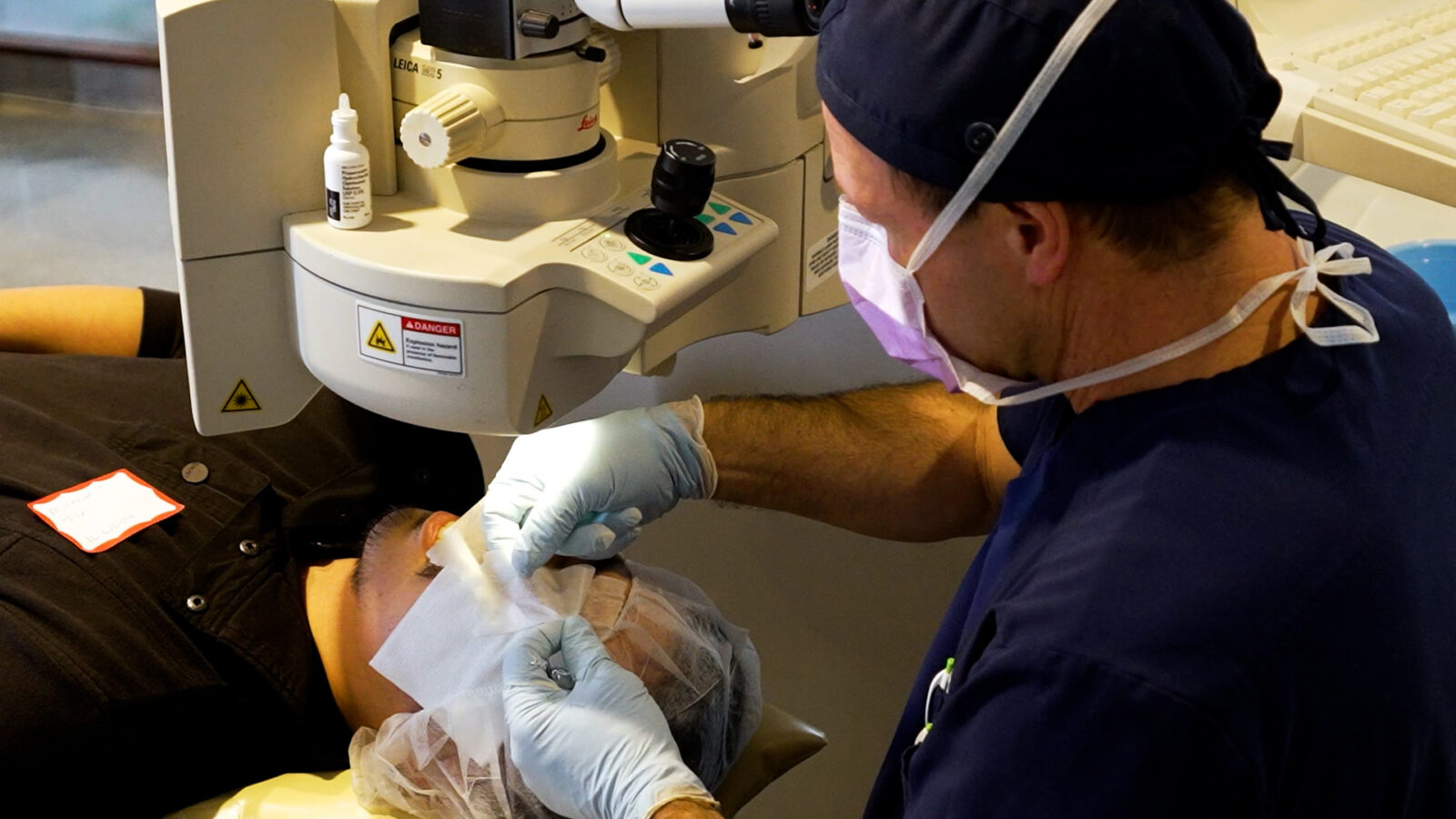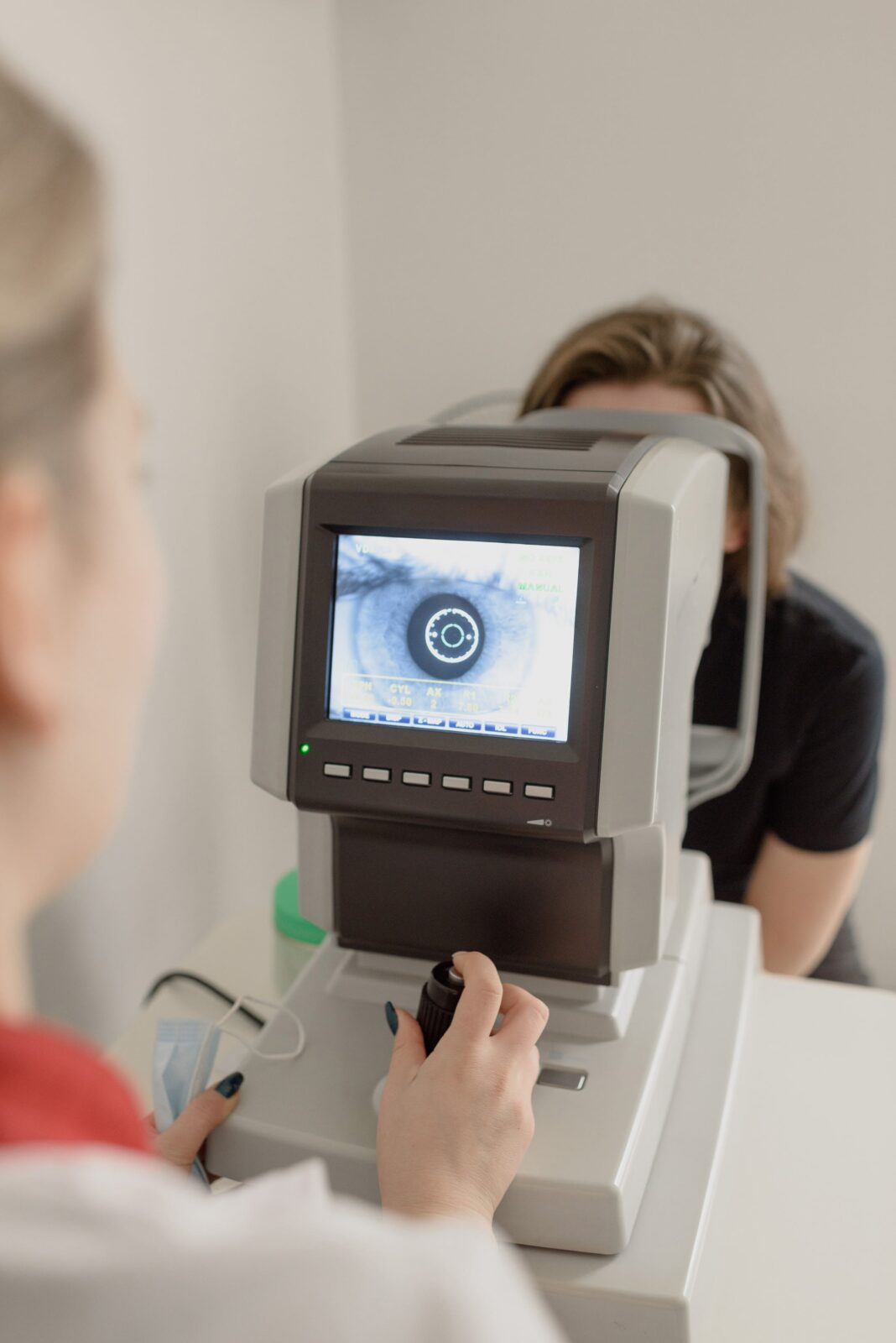
LASIK (Laser-Assisted In Situ Keratomileusis) is a widely performed refractive surgery aimed at correcting vision issues such as myopia, hyperopia, and astigmatism. While many patients achieve significant improvements in vision, it’s essential to be aware of potential side effects associated with the procedure.
Common Side Effects of LASIK Eye Surgery
Most LASIK patients experience temporary side effects that subside within a few weeks or months. Here’s a breakdown of common side effects and effective management strategies:
Dryness
A significant number of LASIK patients experience dry eye symptoms post-surgery. This occurs due to temporary disruption of the corneal nerves during the procedure, leading to decreased tear production. Symptoms typically include vision fluctuation with or without a dry, burning, gritty sensation. These symptoms usually resolve within a few months and relief can be found with frequent artificial tear use. Sometimes other therapies are recommended for these short-term side effects.
Temporary Visual Disturbances
Postoperative visual disturbances are relatively common and may include:
- Glare: Increased sensitivity to bright lights.
- Halos: Rings or hazy circles around light sources, especially noticeable at night.
- Starbursts: Radiating lines emanating from lights.
- These usually improve as the cornea heals, typically within days or weeks.
Discomfort
Discomfort most commonly occurs within hours of the initial post-operative healing period which can include itching, burning, and foreign body sensation. This is best alleviated by a doctor-recommended nap immediately following the procedure. Any mild residual discomfort will gradually decrease and eventually resolve in the subsequent days of healing.
Less Common Side Effects
While less frequent, some individuals may experience other side effects:
Infection and Inflammation
While very uncommon, infections or inflammation can occur after surgery. Prompt medical attention is crucial to minimize the risk of potential vision complications.

Flap Complications
During LASIK, a corneal flap is created to allow for reshaping of the underlying tissue. In rare cases, complications can arise, such as:
- Displacement: Movement of the flap from its original position.
- Epithelial Ingrowth: Growth of surface cells beneath the flap.
Such issues may require additional surgical intervention to correct.
Regression
In some instances, the eyes may experience changes over time towards the pre-LASIK prescription, a phenomenon known as regression. This is more common with very large prescriptions and may necessitate an enhancement procedures or a return to corrective lenses if an enhancement is not medically safe to do so.
Corneal Ectasia
A very rare but serious complication where the cornea becomes weakened and begins to bulge outward, leading to distorted vision. This condition may require treatments such as corneal cross-linking or, in severe cases, a corneal transplant.
Mitigating LASIK Risks
Following your doctor’s post-operative instructions diligently is vital for minimizing side effects and optimizing healing. Here are key practices to ensure a smooth recovery:
- Avoid rubbing your eyes to prevent dislodging the corneal flap or disrupting healing.
- Strict adherence to the prescribed medication regimen will ensure proper healing.
- Use artificial tears frequently as directed by your doctor.
- Experienced Surgeon: Select a reputable and experienced ophthalmologist to perform the procedure.
- Wear protective eye shields while sleeping for the recommended timeframe to prevent accidental rubbing.
- Avoid strenuous exercise or contact sports for the recommended timeframe to prevent corneal flap disruption.
- Attend all follow-up appointments with your doctor to monitor progress and address any concerns.
While LASIK offers the potential for significant vision improvement, it’s important to be informed about possible side effects. Most side effects are temporary and resolve as the eye heals, but understanding these risks enables patients to make informed decisions and seek prompt care if complications arise.
The LASIK Journey with TLC Laser Eye Centers
At TLC Laser Eye Centers, we prioritize safety in helping patients achieve their life-changing vision goals. Patients undergo a complementary LASIK consultation and examination to ensure that they are good candidates for LASIK and provide the surgeon with essential measurements of the cornea.
Using the most up-to-date technology and a panel of some of the best surgeons in the country, we provide our patients with a high standard of care and great post-operative results.
We also offer the TLC Lifetime Commitment®. In the unlikely event a LASIK enhancement is necessary, this program provides qualified patients no-charge, same-technology enhancement procedures for life. This commitment will be honored at any of our participating LASIK eye centers across the United States, offering unparalleled peace of mind.
Schedule your free consultation and take the next step towards better vision today!
References
American Academy of Ophthalmology. (n.d.). Facts About LASIK Complications. Retrieved from https://www.aao.org/eye-health/treatments/facts-about-lasik-complications
Assil Eye Institute. (n.d.). Dr. Assil and His Team Correct the Side Effects of Laser Eye Surgery. Retrieved from https://assileye.com/blog/lasik-eye-surgery-side-effects-corrected/
Eyesight Hawaii. (n.d.). Lasik Eye Surgery Risks: 8 Signs That Your Lasik Failed. Retrieved from https://eyesighthawaii.com/lasik-surgery/8-lasik-surgery-risks/
Michigan Medicine. (n.d.). Pros and Cons of LASIK: Are the Risks Worth the Cost?. Retrieved from https://www.michiganmedicine.org/health-lab/pros-and-cons-lasik-are-risks-worth-cost
Mayo Clinic. (n.d.). LASIK surgery: Is it right for you?. Retrieved from https://www.mayoclinic.org/tests-procedures/lasik-eye-surgery/in-depth/lasik-surgery/art-20045751


